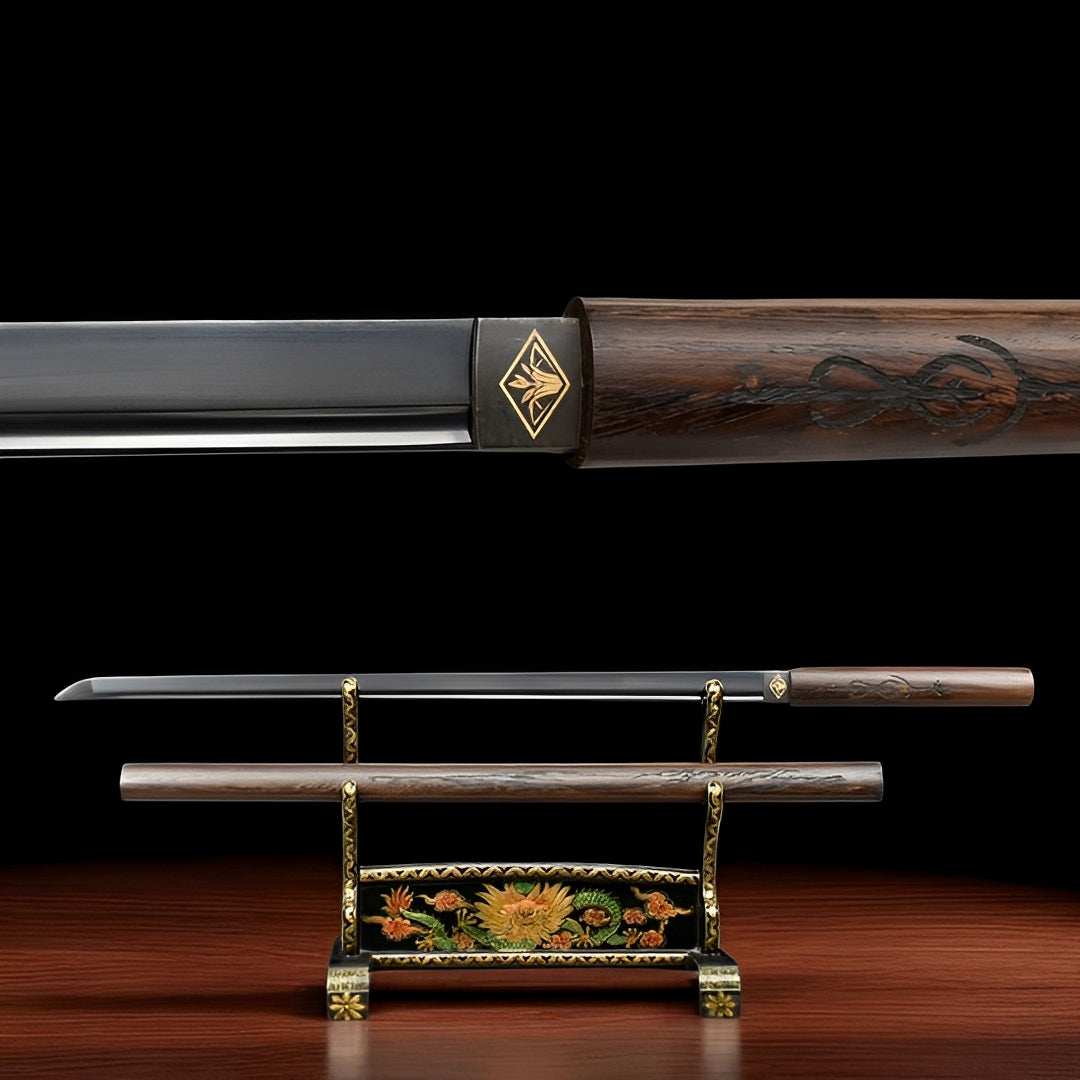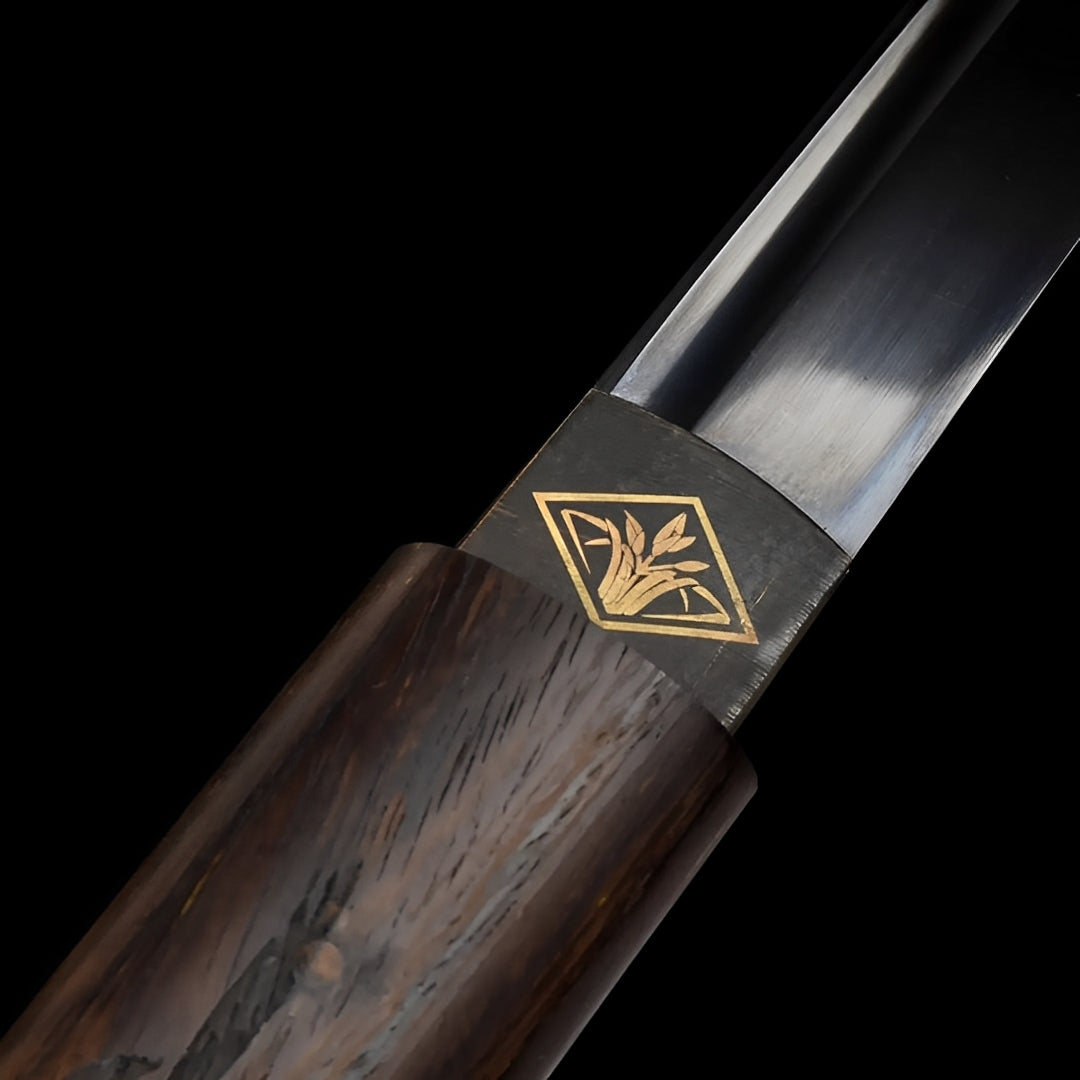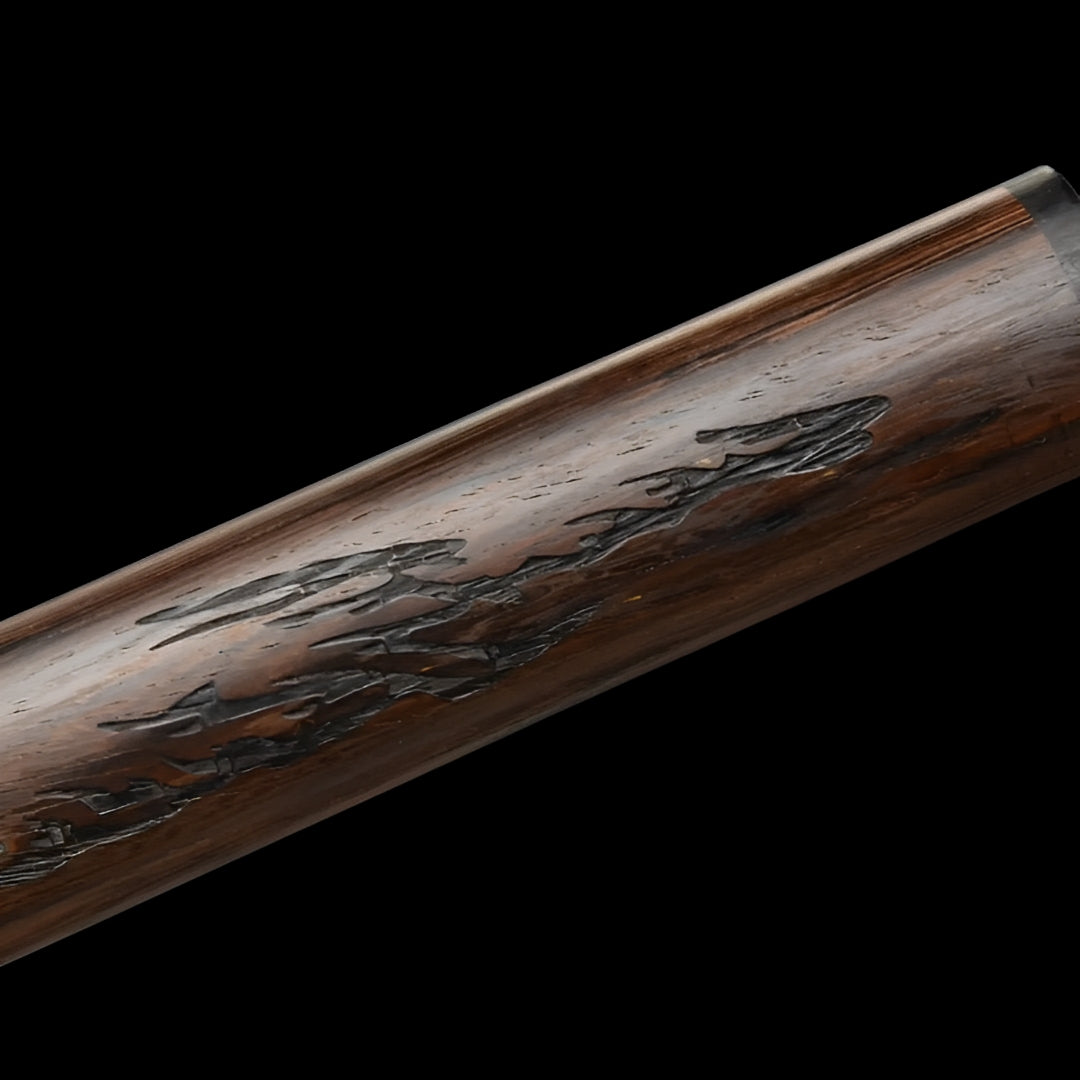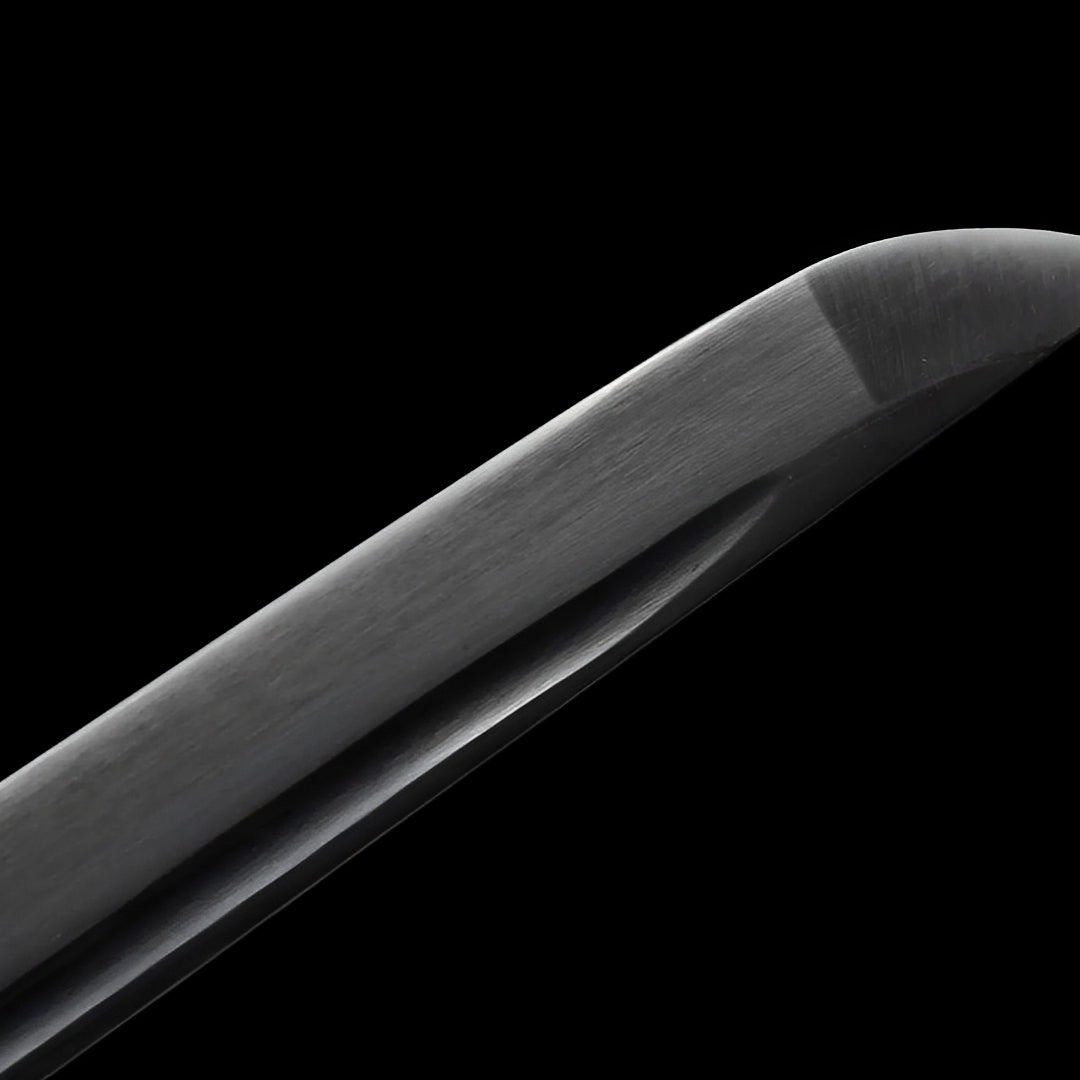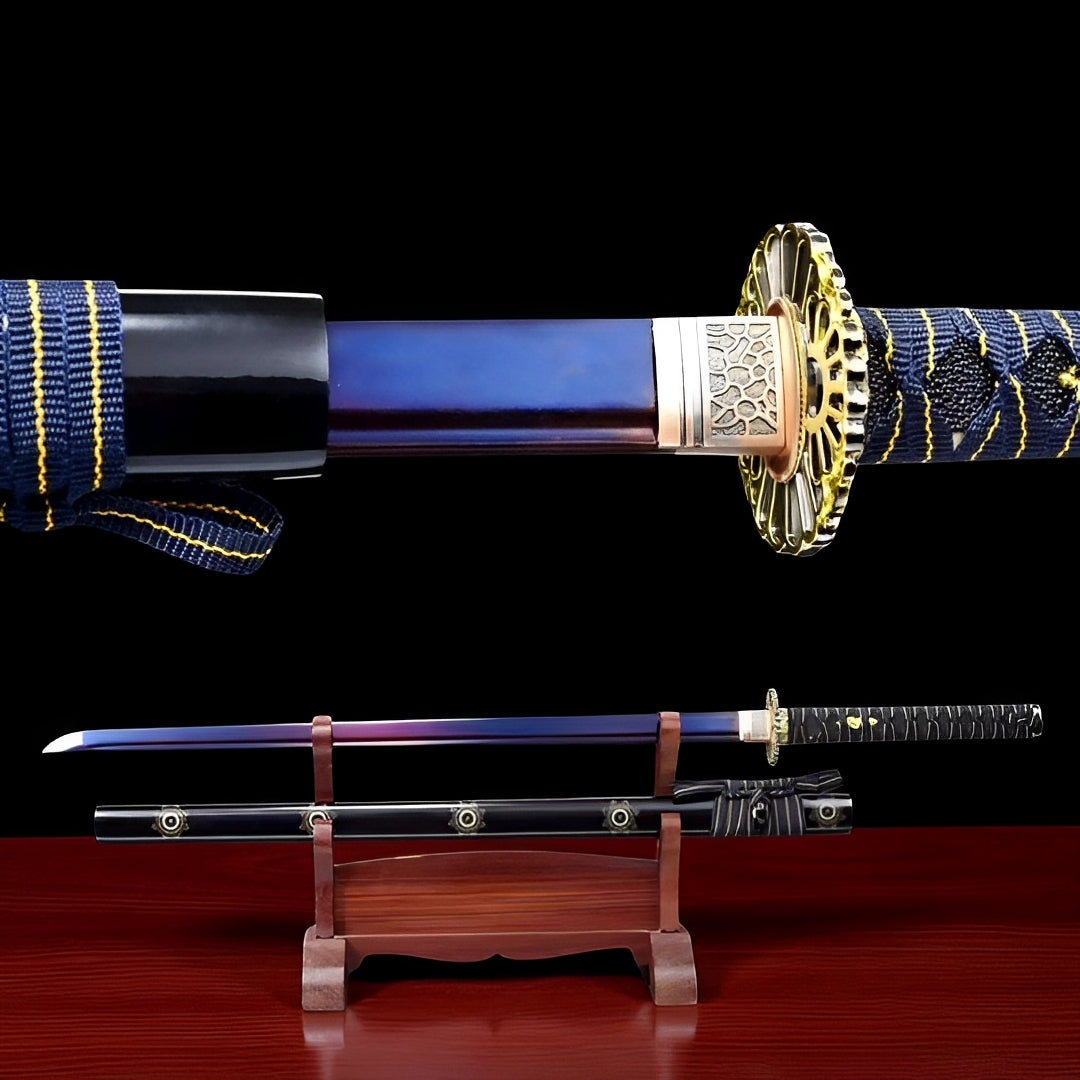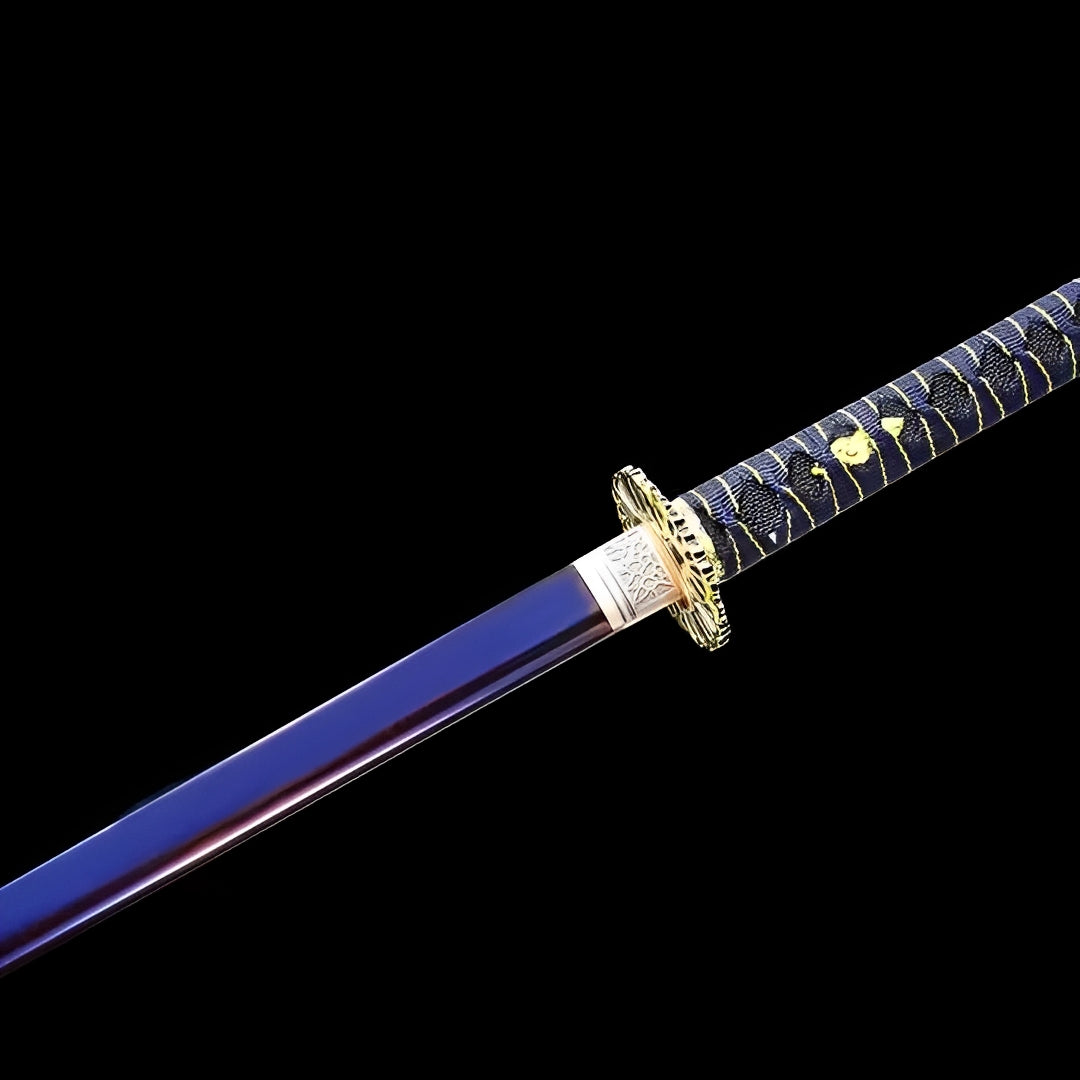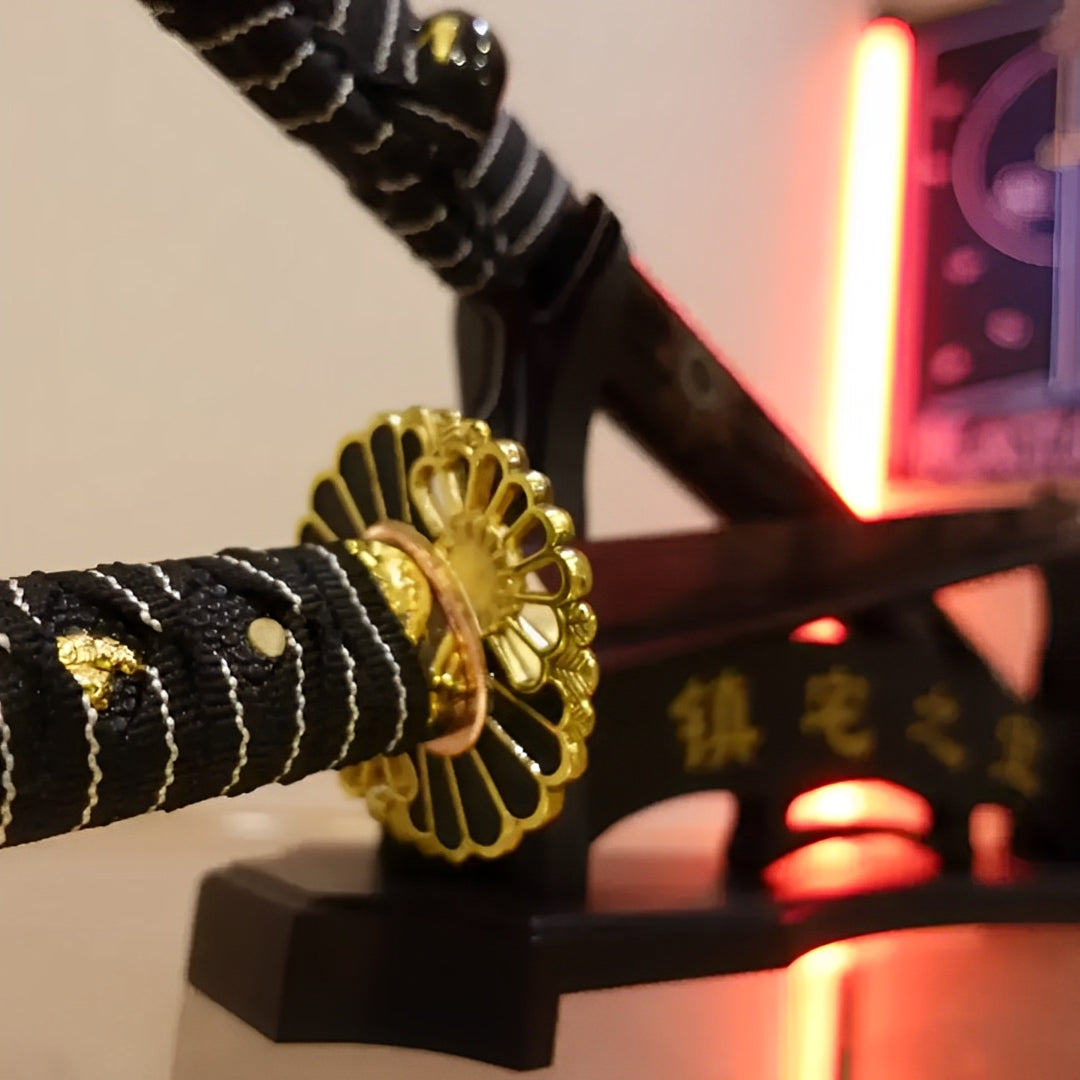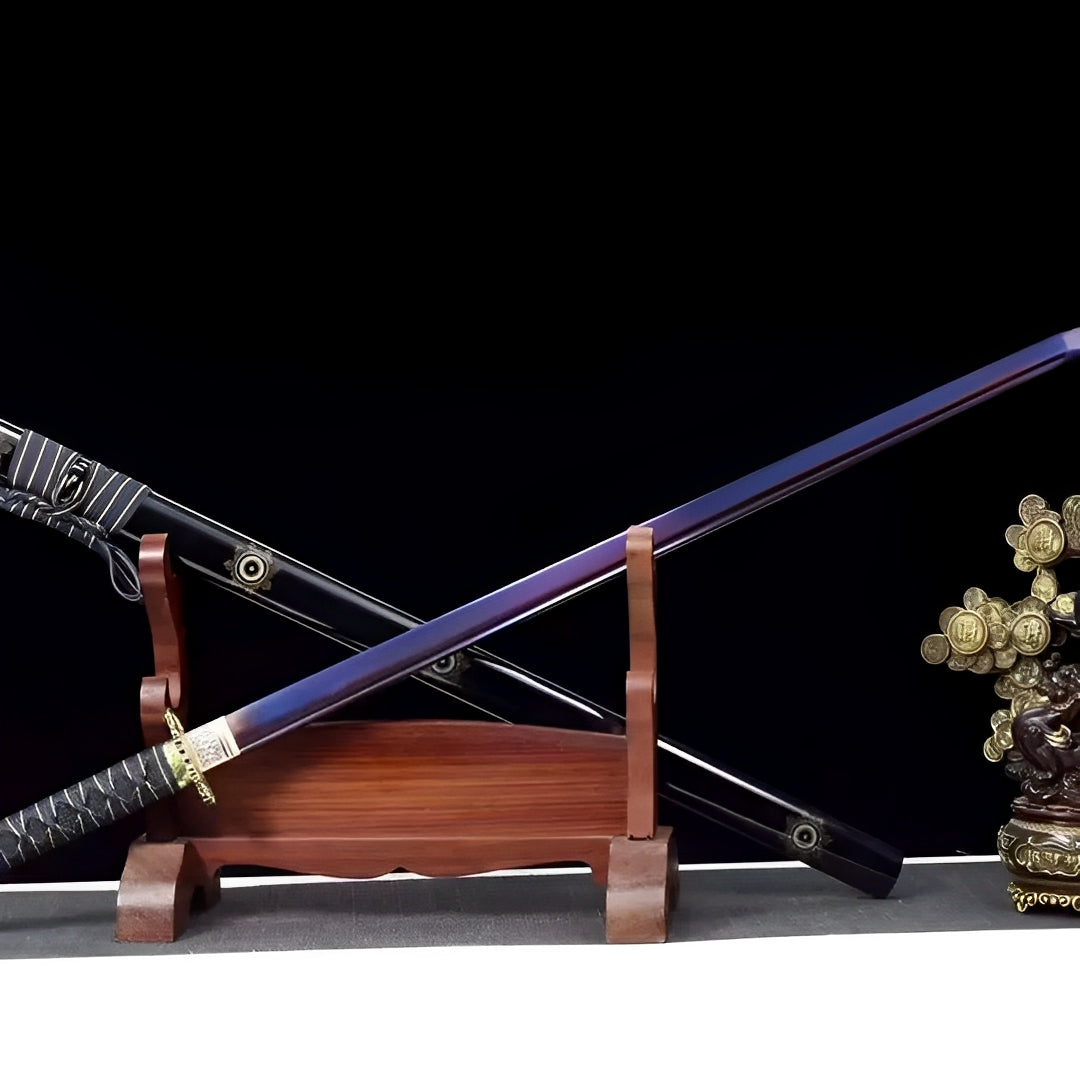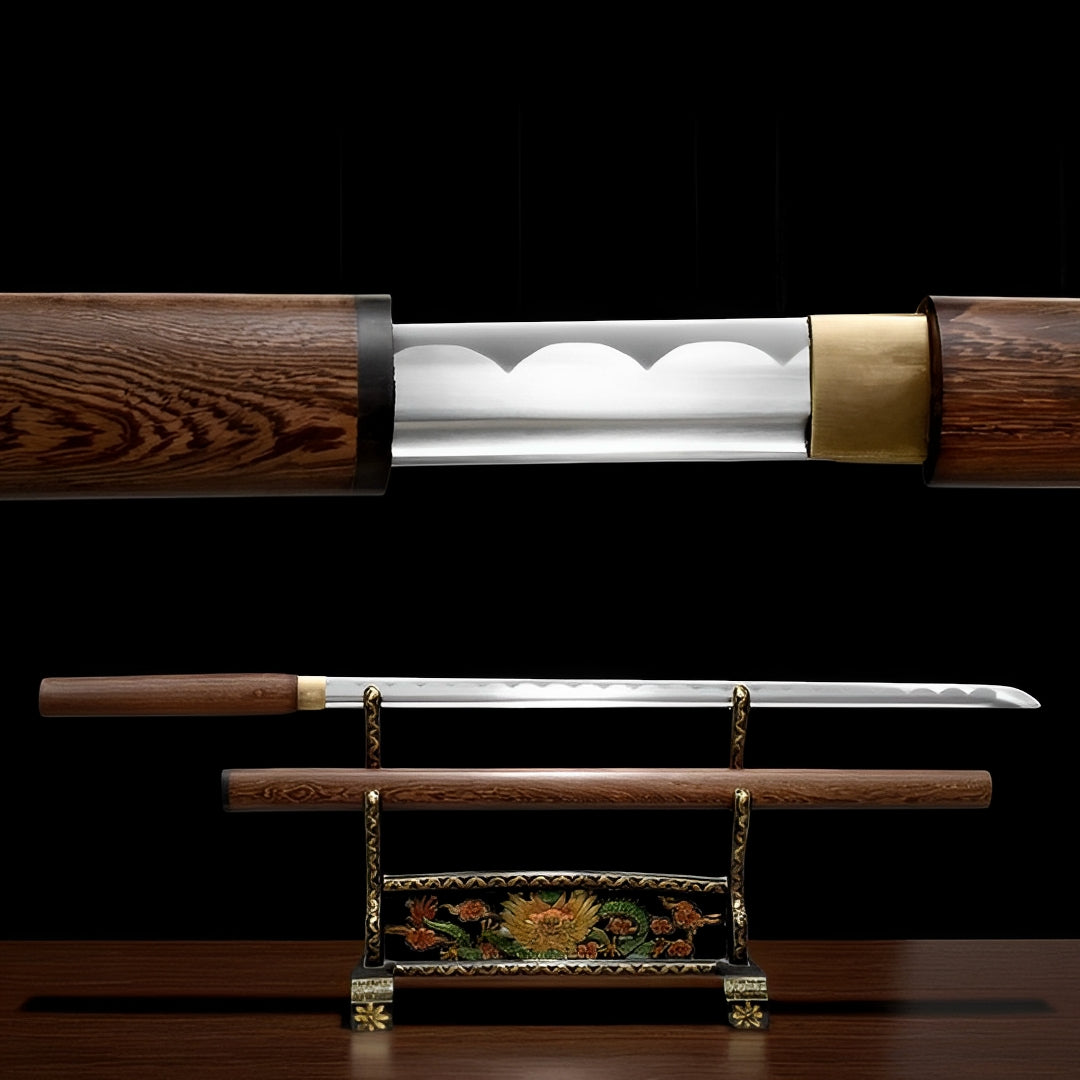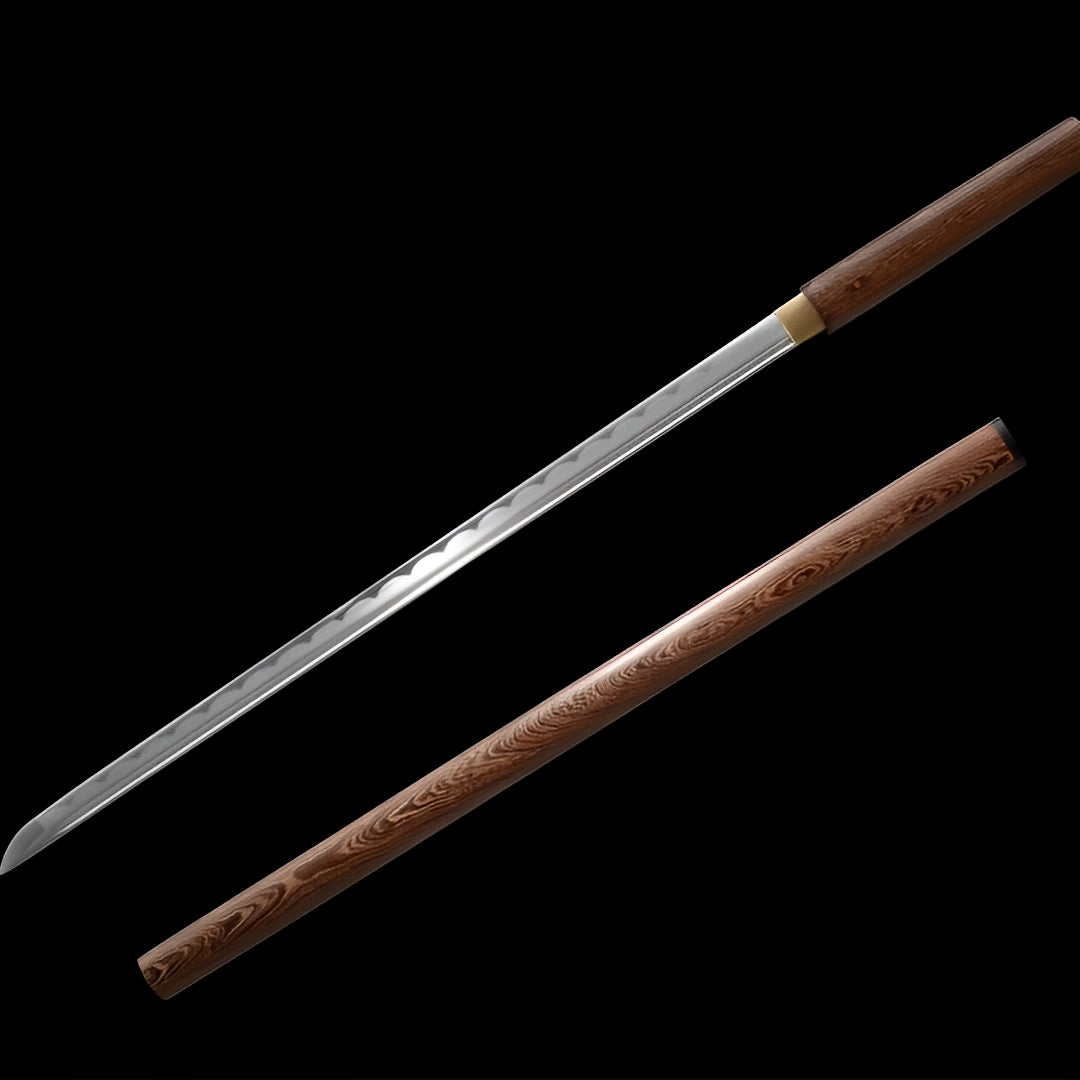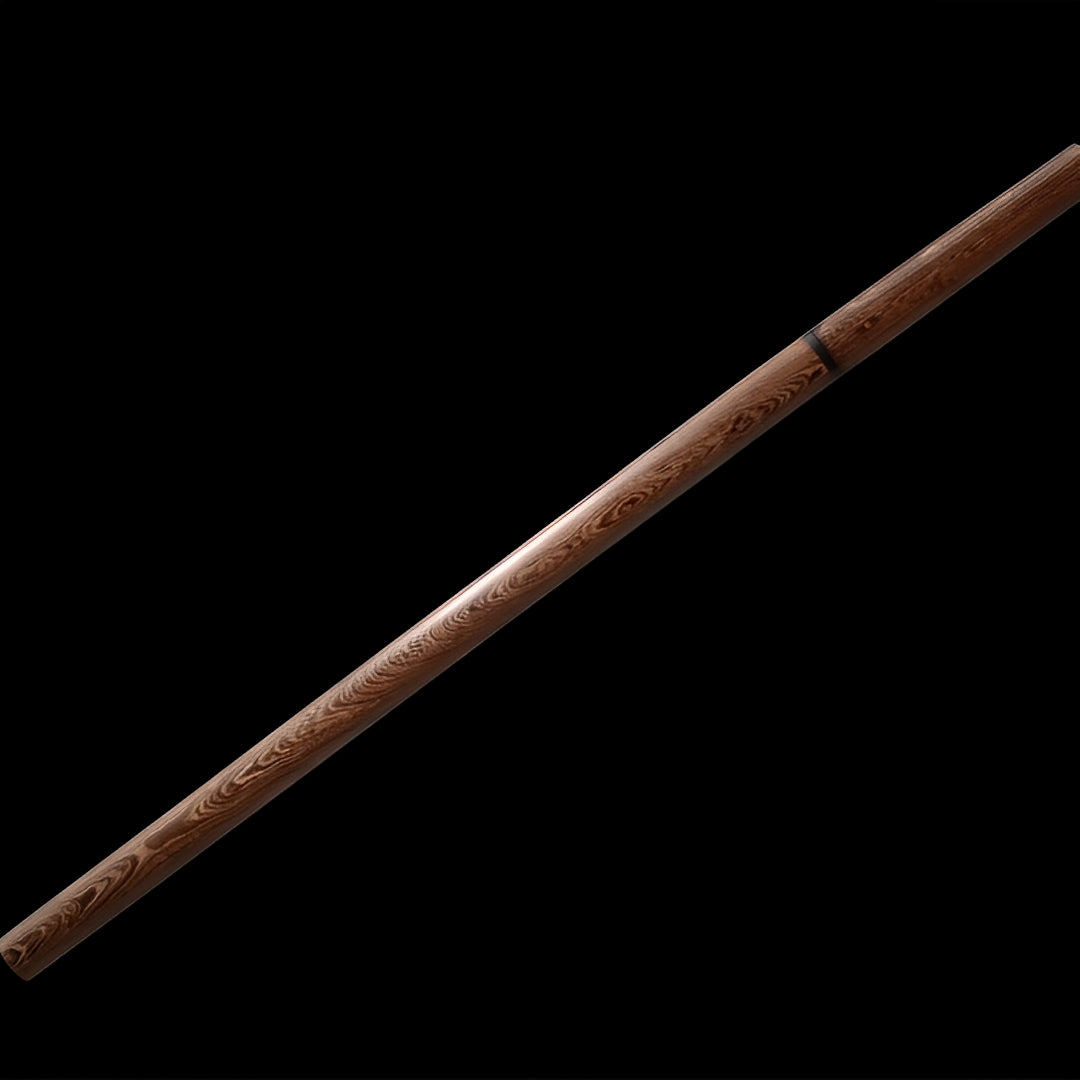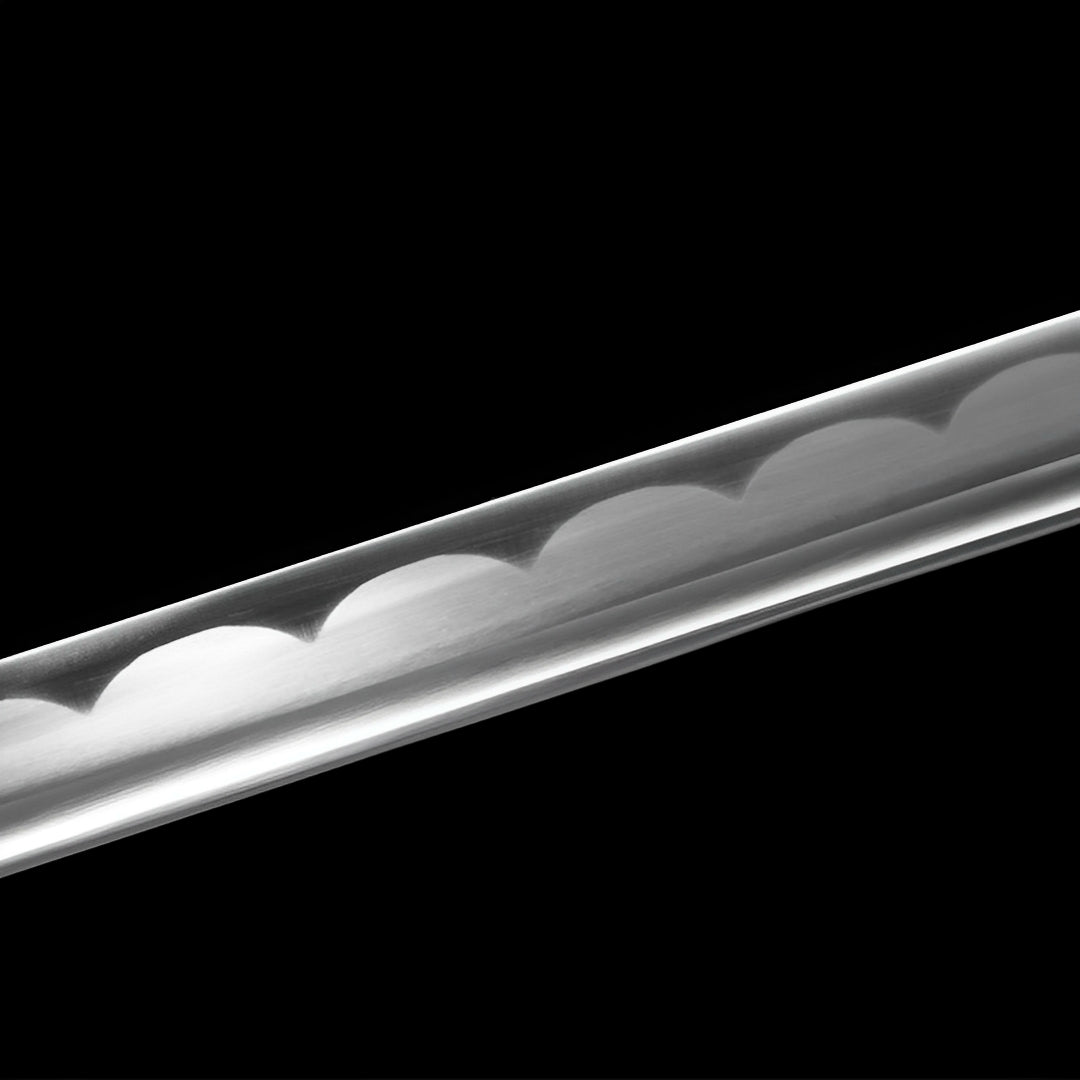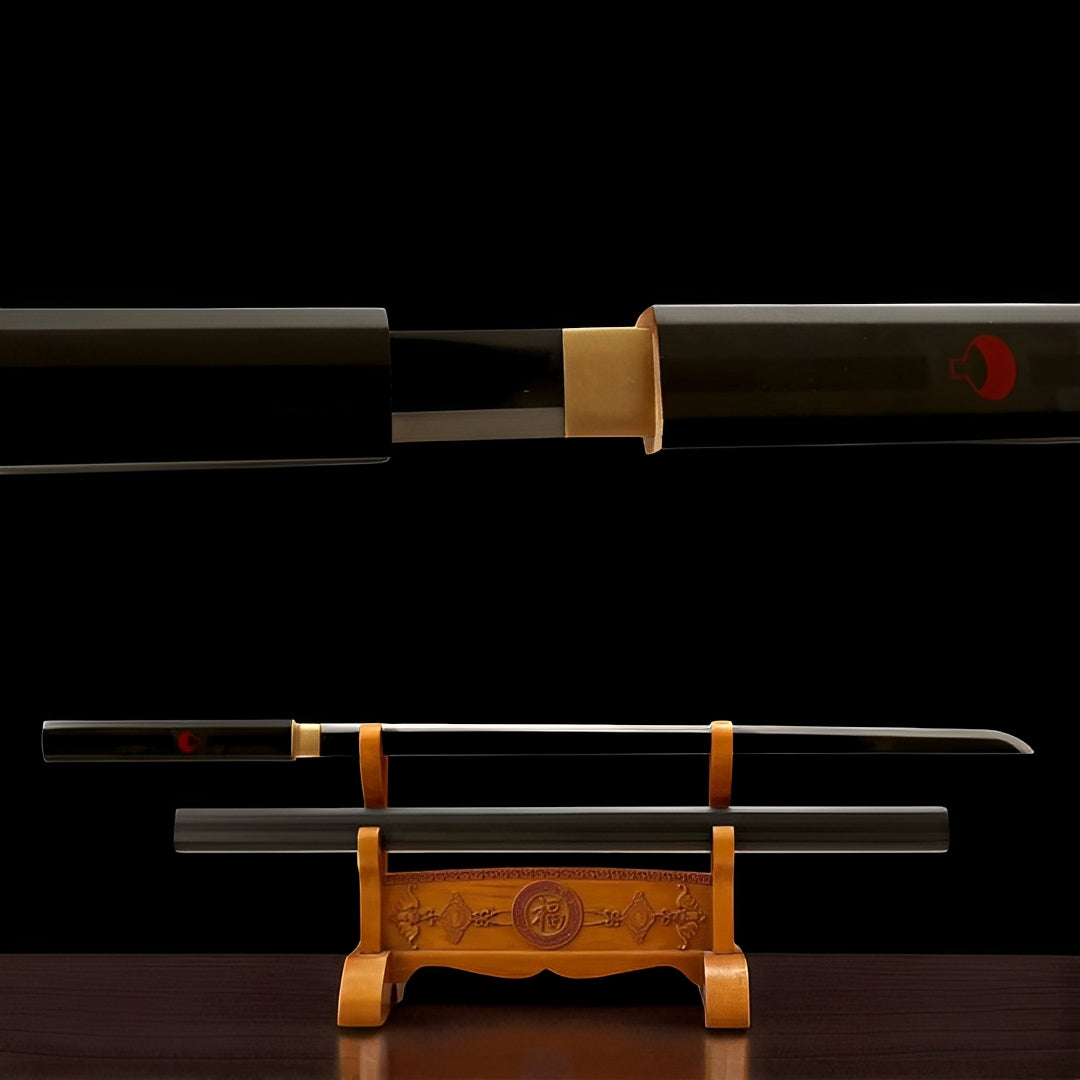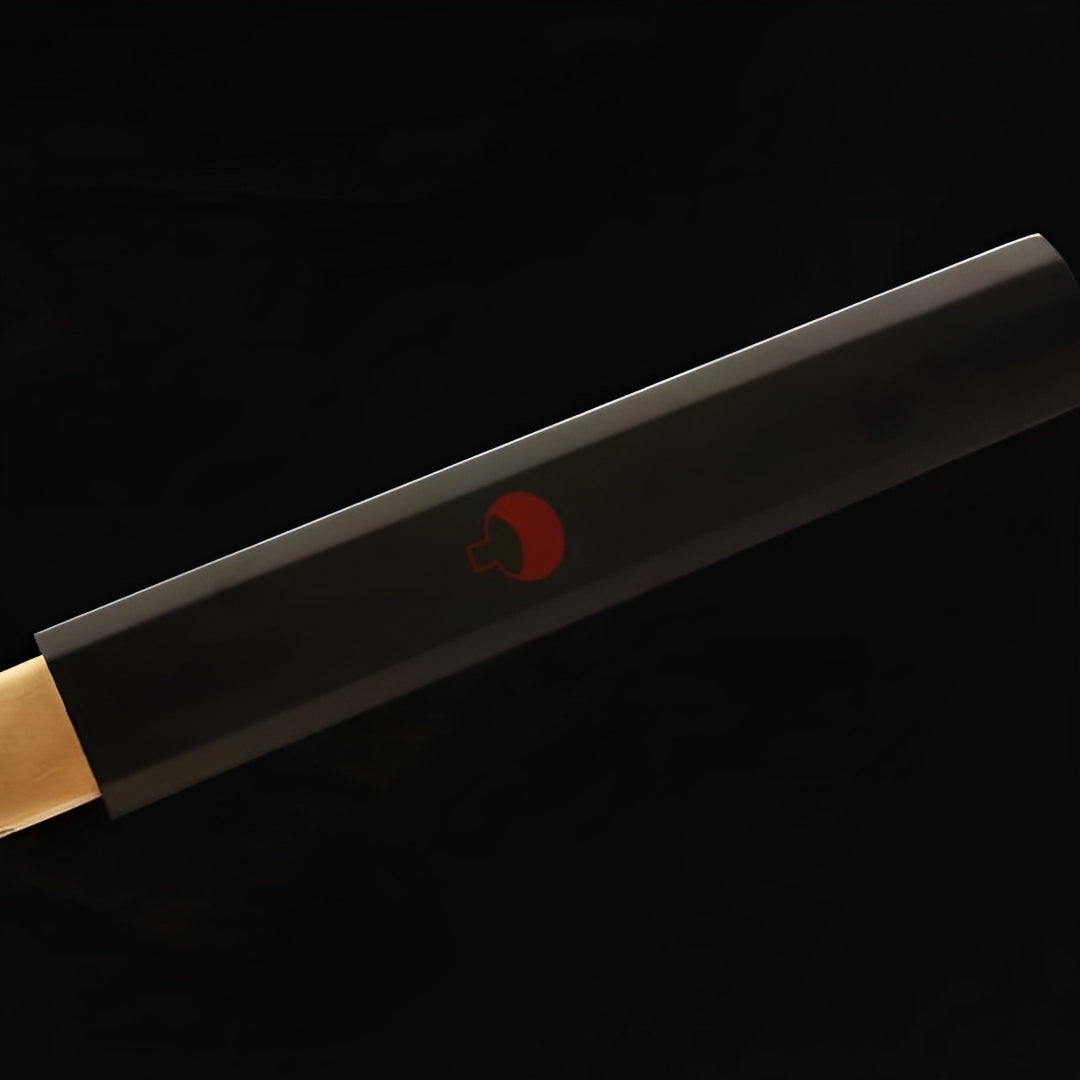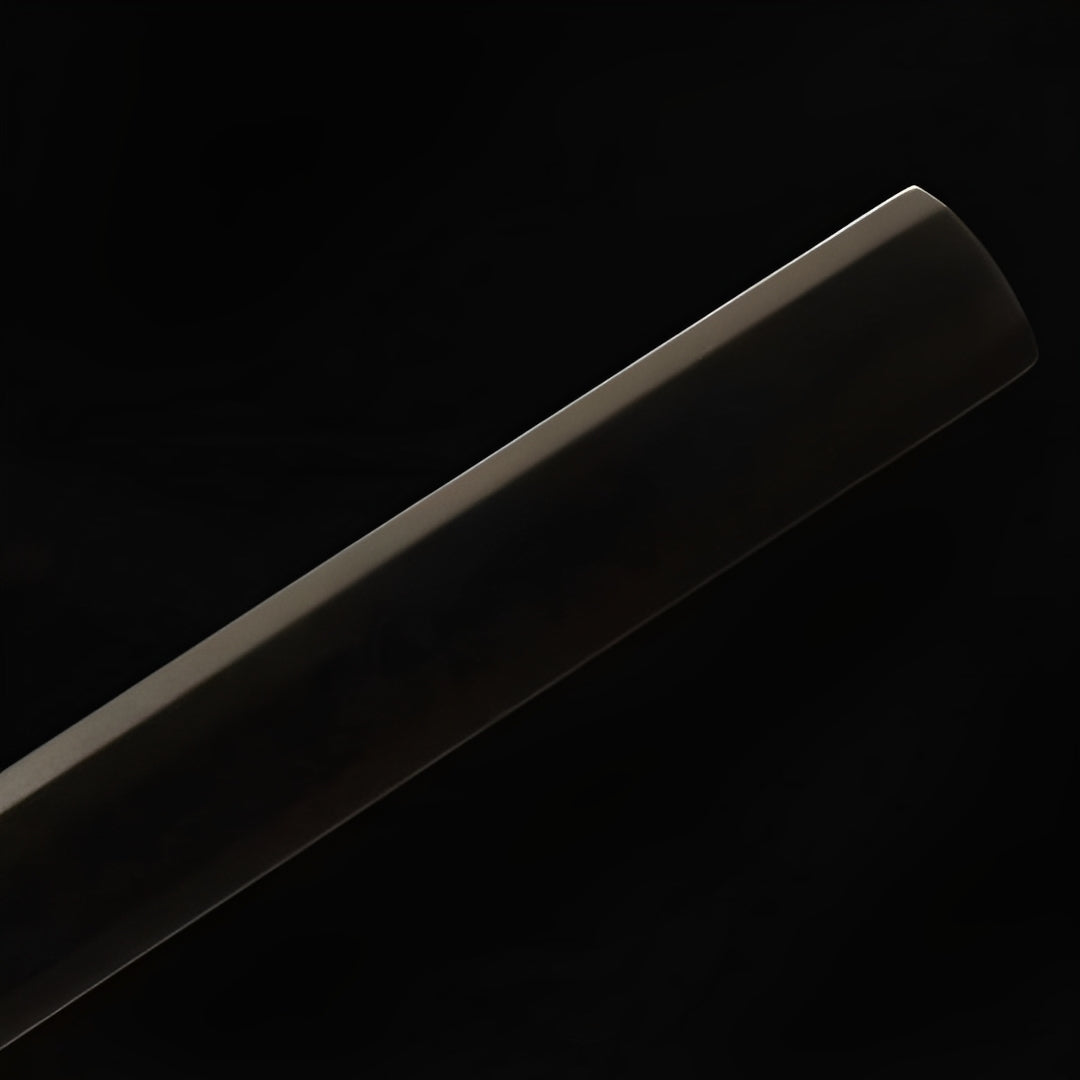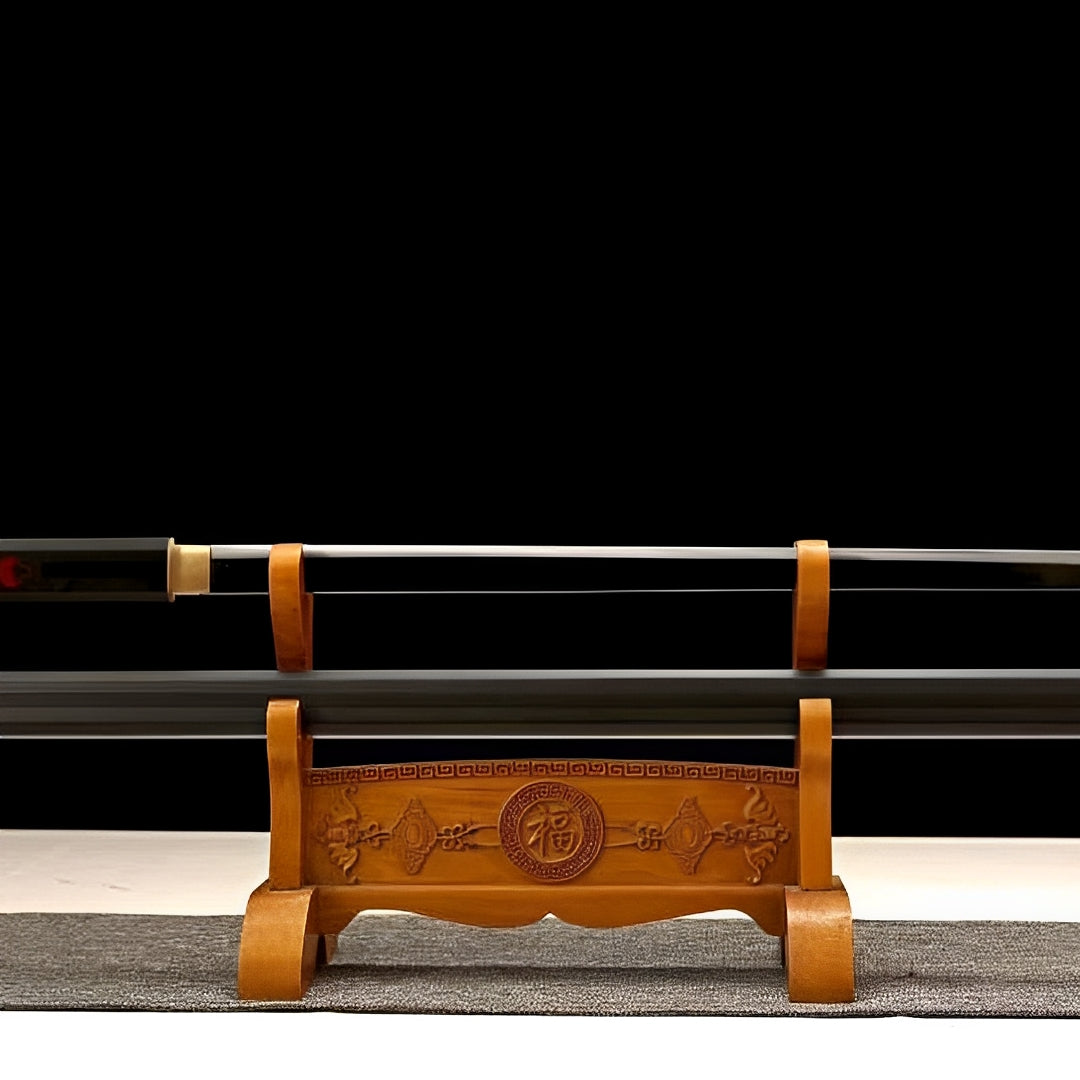Kagehana Ninjato (Manganese Steel) - 影花忍
Ships within 48/72h
Forged Blade
Collector Quality
Trusted Globally
Inspired by Japan
Yoru no Kage Ninjato - 夜の影
Ships within 48/72h
Forged Blade
Collector Quality
Trusted Globally
Inspired by Japan
Shizen Ninjato (Carbon Steel) - 自然の
Ships within 48/72h
Forged Blade
Collector Quality
Trusted Globally
Inspired by Japan
Sasuke Katana (Naruto) - サスケ
Ships within 48/72h
Forged Blade
Collector Quality
Trusted Globally
Inspired by Japan
The Ninjato: A Sword Wrapped in Mystery and Purpose
With its straight blade and utilitarian design, the Ninjato stands apart from the curved elegance of traditional Japanese swords. Compact, efficient, and surrounded by legend, this blade was said to serve the elusive ninja, masters of stealth, sabotage, and survival.
Unlike the katana, which symbolized the samurai’s honor, the Ninjato was a pragmatic tool. It favored quick strikes over ceremony, deception over duels. Though its origins remain unclear, its presence in modern martial culture is undeniable.
What is a Ninjato Sword?
The Ninjato is commonly described as a straight-bladed Japanese sword, roughly 50 to 60 cm in length (19 to 24 inches). It’s often associated with the shadowy figure of the ninja, or shinobi, who needed a weapon suited for speed, infiltration, and mobility.
Several distinctive features set the Ninjato apart:
-
A straight blade with an angular, chisel-like tip
-
A square or rectangular tsuba (guard), often oversized or entirely absent
-
A scabbard (saya) sometimes longer than the blade, hiding tools or documents
-
A long tsuka (handle) that offers reach and storage space for hidden items
More than a weapon, the Ninjato is an icon of silent strength and practical design.
A History as Elusive as the Ninja
Unlike the katana, the Ninjato has little documentation in historical records. Its absence, however, may be intentional. After all, the ninja specialized in vanishing without a trace.
Theories about the Ninjato's origin include:
-
Ninjas crafting their own swords with available materials, resulting in the straight, no-frills blade
-
The Ninjato being a modified Chokuto or a shortened katana for urban missions
-
Its development as a modern invention, popularized through martial arts, films, and museums
The earliest mention of a “ninja sword” appears in the 1956 booklet Ninjutsu by Heishichiro Okuse. The blade gained further visibility through the Ninja Museum of Igaryu and 1980s Hollywood, where it was wielded by masked warriors on the big screen.
Design, Structure, and Tactical Details
The Ninjato's design serves a purpose: efficiency. Every part of the sword reflects its mission-focused nature.
Blade
-
Straight and single-edged, often under 60 cm
-
Ideal for thrusts and quick cuts
-
Resembles ancient Chokuto swords rather than curved katanas
Tsuba (Guard)
-
Typically square or rectangular
-
Allows the blade to be propped like a step for climbing
-
Sometimes removed entirely for easier concealment
Construction Method
-
Said to be forged by the ninja themselves using basic, accessible materials
-
Forging focused on function, not ceremony or aesthetics
-
Lacked the artistic hamon or polish of katana blades
Other Unique Features
-
Saya (scabbard) may be extended to store hidden items
-
Handle cavity used to conceal small tools, maps, or poisons
-
Overall design allowed fast deployment and stealthy carrying
Whether legend or innovation, the Ninjato's structure fits the ninja’s world perfectly.
How the Ninjato Was Used in Combat
The Ninjato wasn't just for cutting, it was a multi-purpose tool used in fast-paced, unpredictable encounters.
-
Stealth attacks: Its short blade was easy to conceal beneath clothing
-
Indoor or tight-space fighting: Easier to maneuver than a katana in narrow alleys or interiors
-
Deception tactics: Its plain appearance made it look broken or harmless, offering strategic advantage
-
Defensive use: The square tsuba and saya were used for blocking, striking, or even climbing
A ninja didn’t rely solely on brute strength, they used misdirection, creativity, and speed. The Ninjato enabled all three.
Ninjato vs Katana: Key Differences
While both swords are legendary, they serve different needs. Here's how the Ninjato compares to the katana:
| Feature | Ninjato | Katana |
|---|---|---|
| Blade Shape | Straight | Curved |
| Length | Usually under 60 cm | Typically 60–73 cm |
| Tsuba | Square or simple | Ornate, circular or oval |
| Historical Use | Unverified, symbolic | Real, used by samurai |
| Origin Period | Modern interpretation (post-WWII popularity) | Kamakura period (12th–14th century) |
| Primary Users | Ninjas, martial artists, pop culture figures | Samurai warriors |
| Combat Style | Fast, concealed, close-range | Sweeping, two-handed strikes |
While the katana is rooted in ritual and tradition, the Ninjato, mythical or not, represents raw adaptability.
The Modern Appeal of the Ninjato
Despite its uncertain past, the Ninjato has found a real home in the modern world. Martial artists, collectors, and pop culture fans alike are drawn to its unique style and mystique.
In our collection, you’ll find:
-
Functional replicas: With carbon steel blades, ready for training or display
-
Decorative models: Featuring striking black finishes, ninja engravings, and stealthy styling
-
Historically inspired pieces: Based on the earliest fictional and cinematic representations of the Ninjato
Each blade channels the legend of the shinobi, stealthy, focused, and always in control.
Maintaining Your Ninjato
To preserve the appearance and quality of your Ninjato sword:
-
Store it in a dry place to avoid corrosion
-
Oil the blade regularly with proper sword maintenance oil
-
Wipe it clean after handling to prevent fingerprints or stains
-
Keep it sheathed when not in use, preferably in a horizontal position
Treat your Ninjato with care, it may not be sacred, but it's certainly special.
A Blade That Transcends History
Whether or not it existed centuries ago, the Ninjato has become a cultural symbol. It reflects the enduring fascination with stealth, discipline, and mastery beyond the battlefield.
It’s not about historical certainty, it’s about what this sword represents.
By owning a Ninjato, you’re stepping into a world of silent warriors, ancient techniques, and modern-day legends. It’s a tribute to agility, to precision, and to the untold stories written in the shadows.
+ View more
